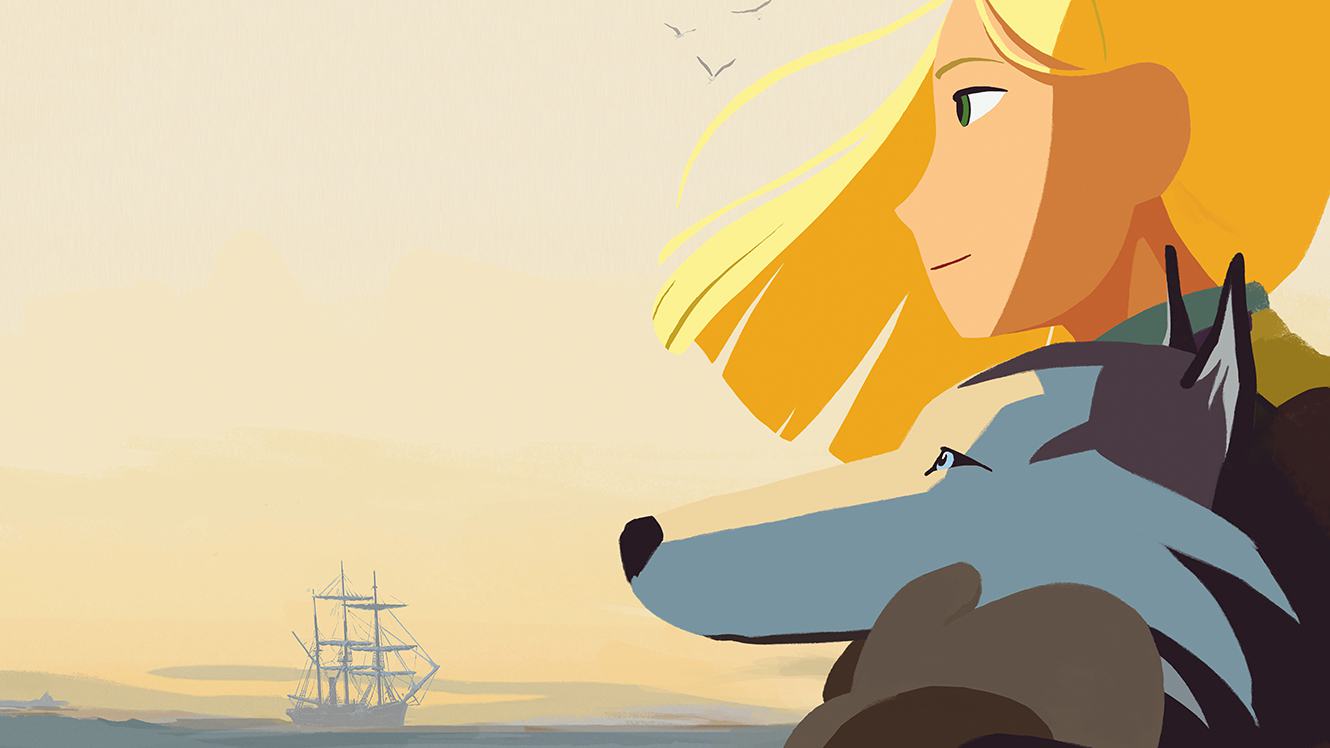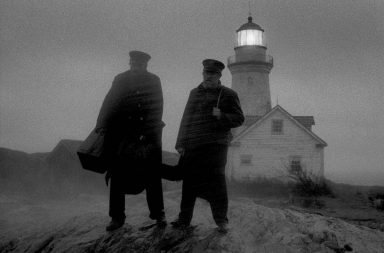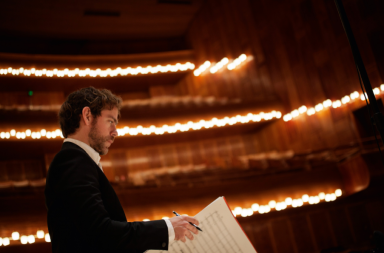Inspired by our partnership with the European Animation Awards, we celebrate all things animation for our November #AnimationMonth here at Score it Magazine! This wonderful award ceremony unites, celebrate and honours all the talent within the European Animation community. Today, Score It Magazine launches our official guide to the Emile Awards. We talk you through the Emile nominees for the Best Soundtrack in a Feature Film Award and the Best Soundtrack in a TV/Broadcasting Production, so you are fully preped and ready for awards night.
Born in Paris, France, Jonathan Morali is an incredibly accomplished composer, singer and songwriter. Morali got his start in the music industry as the frontman for French indie band Syd Matters. Together, the band has created four albums since 2003 including the poignant Black & White Eyes and the 2011’s Brother Ocean.
Alongside his work on the stage, Morali further extends his compositional prowess to the screen. Having written scores for Eric Rochant’s Mobius, video game Life is Strange and most recently Rémi Chayé’s Long Way North (Tout en Haut du Monde). This last film tells the story of a young Russian aristocrat in 1882 who goes on an epic adventure to save her family’s reputation. The film received great success, winning the Annecy Audience Award among a multitude of festival nominations.
Score It Magazine: How did you initially get involved with this project? It’s your debut animation score isn’t it?
Jonathan Morali: The director, Rémi Chayé, got in touch with my manager. I think he was working on the animatics for Long Way North at the time. He added some tracks from my band Syd Matters to accompany the images and add some rhythm to the piece. Naturally, he thought it would be a good idea to ask my manager about it and see if we could possibly create something together. I eventually met him and we simply got to work. I listened to him, understood what he wanted and I was very excited about it.
Did you involve other members of Syd Matters?
No. The film contains two tracks we had composed with Syd Matters, but I wrote the score alone. Composing for images is something I try to create alone.
Long Way North takes place in 19th century Russia. How did you manage to incorporate elements from rich Russian music with your own style?
Actually, I didn’t. This was one of the first questions Rémi and I asked ourselves: if I had to try and compose a score that leaned towards folklore, then I wasn’t the right person to do it, because I can’t do it, and there’s no authenticity to it when it’s done wrong. When you’re looking for a specific type of music, such as country or folklore, I think the right thing to do is to find specialised musicians. I decided very early on that I would not try to force myself with this music because it is not part of my musical culture. The only thing I could do was to compose something close to my heart, which would be a personal interpretation of the story, and not imitate certain sonorities or harmonic aspects of the Russian music. I think it would have been ridiculous. Luckily, Rémi completely agreed, he told me that if he tried to put Syd Matters songs over the images, it was because something in it appealed to him and he wanted to break the stereotypical idea that music had to completely match the images. Rémi wanted a modern score, a score that was closer to his drawing style rather than the historical context of the story.
Although you didn’t try to imitate it, there are vague Russian music influences however in a much more modern atmosphere. Did you want to take the viewer on a journey with your music?
It’s always touching to hear that one can feel things that you didn’t try to put in your music. Maybe it’s unconscious. Anyway, I think, or at least I hope, that it comes from the connection between the music I proposed and the narrative and the visual power of Rémi’s universe. I had the images in front of me and I tried to react to it with music, without basing myself on intentions. This is the way I work: get rid of any consideration in order to capture the raw reaction I get from the images. As far as I’m concerned, this is the most honest way I can work.
Does the way you compose for your band influence the way you compose for image? Does one medium affect the other?
There is an inevitable influence, the risk being of course doing the same thing you’ve already done before over and over again. That’s not interesting, neither for me nor the composer. The influence began when I realised that Rémi actually wanted me for the music that I write naturally; I looked at this as a possibility to experiment a style effect, since he listened to the music that resembles me the most. What he heard in Syd Matters sparked his interest: when he told me he wanted me to put this universe in this score, I simply felt free to write it and arrange in my own way.
Do you think there is more freedom when you compose for an animated film rather than a live-action film?
It was my first time composing for an animated film, but I think, fundamentally, the question is not about the fact if it’s about animation or live action. The author is the one that makes a difference: he pulls the strings, he’s the one you’re looking at to get your directions, he’s the one whose needs you need to meet. If Rémi made a live action film today, I would feel the same freedom I had with Long Way North. He’s got such a clear and precise vision of what he wants that his preparation work does not settle for approximations or “let’s see that when we’ll be editing”, which is something you usually hear when you shoot a live action film. In animation, there are so many people involved and so much work that Rémi had to have a very clear vision of what he wanted. It was very pleasant: I was working with somebody who didn’t try too many things. He experimented with things during his groundwork, but once he passed that stage, everything was clear, and you get so much freedom from having an extremely clear screenplay and aesthetic. I understood perfectly what Rémi was telling me and I felt free to compose.
This working method reminds me more of video game developers rather than film directors.
It’s funny you say that, because I often think that what I found with Rémi and my experience in animation is something I have already found with video games. Both are very technical jobs and must not suffer from approximations. Choices have to be made upstream and they need the presence of a captain. On the other hand, you deal with artists who need to express themselves and who might not compromise: all of this requires clarity in the groundwork. I think that the relevant boundary between animation films and video games comes mostly from the outsized technique. We’re talking about dozens of people working every day for years. Of course, you can come up with your own ideas, but since the very early developing stage, many people are involved. With Long Way North, I have found a spirit of seriousness and an obligation to be very precise about my intentions for all those people. Team work requires a mastermind who guides people because all the work will start from him. What stimulated me in this project was to have this guy who acted like a guide.
So it’s all about trust really.
Sure! I’ve been composing for pictures for a few years now, but it was still very new to me. Until then, the five of us would compose together within the band, but it was very intimate, we didn’t necessarily have directions. When you collaborate with someone, you look at the other all the time and the other has to reflect that trust, otherwise you feel like you’re in front of a jury, which is not pleasant.
Silence plays an interesting part in the film. How did you work on that?
This comes from Rémi. What struck me when I saw the first drafts was how the storytelling is purified as the story goes. In the beginning, the narrative is very heavy with lots of dialogue, but as Sacha’s journey continues, the story is refined. That’s where silence heavily prevails. The dialogue was already there when we began working together, so it naturally guided my work. Rémi explained to me that the film’s sound design was going to be very particular: elements like wind, snow, ice, would occupy a very important place. This isn’t proper silence, but it’s an absence of dialogue, of things that didn’t need to be said. You progressively move forward towards something almost mystical, and the music had to follow this movement.
Did you bring any ideas for the film’s sound design?
No, actually Rémi came up with all his ideas. I remember that for some sequences, he would give me indications on what was going to be emphasized so I could arrange the music. For instance, he’d say: “in this shot, that thing will crunch”, and so I tried not to put too many things in the harmonic construction. He sent me sketches while the sequence was being animated so I could work on it and see what direction it would take. This is how I like to work: the more sound and picture elements I have, the more I will be able to give the music its space. Sometimes, you get it from instinct, you try to accentuate something or, on the contrary, hold the music in order to let something else, in sight or sound, express itself.
Do you have further scoring projects?
I have a few ones, yes, but I can’t talk about it at the moment. Some are in development, other are more hypothetical, but we are bound under contracts. Anyway, I started in this field six or seven years ago and I like it very much. Like all professions, the more you work, the better you understand the way it works. This allows you to try more pertinent things subsequently. I hope I will be able to work in animation again, I really enjoyed the relationship I had with it.
Along with all other nominees in your category at the Emile Awards, you come from the music scene. How would you explain this rather new interest in film score for live musicians, who are not specialized in composing soundtracks?
It is quite surprising that it didn’t happen before. I think these fields are much closed and open to each other very progressively. In music, for instance, when you need a music video, there are people whose job is to make it, but you rarely ask a filmmaker you like to make your music video. In film, it’s the same thing: directors don’t have the instinct to ask musicians who aren’t in the film score world. I can understand that but I can’t explain why it has opened up only now. It was quite rare ten or twenty years ago. Maybe it’s all about generations: same-aged directors and musicians often listened to the same stuff and have the same musical desires. Nevertheless, I must say that music for moving image is a real technique to learn. For me, as for many people in this case, it has been difficult. You like the composition, it could actually be great when you listen to it, but it doesn’t fit at all with the pictures. Blending the music and image is something very powerful, and you have to learn how to control it.
Interview conducted, transcribed and translated by Valentin Maniglia
Edited by Priya Matharu




